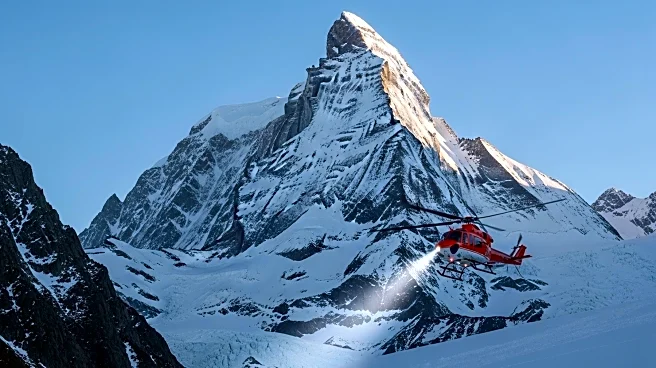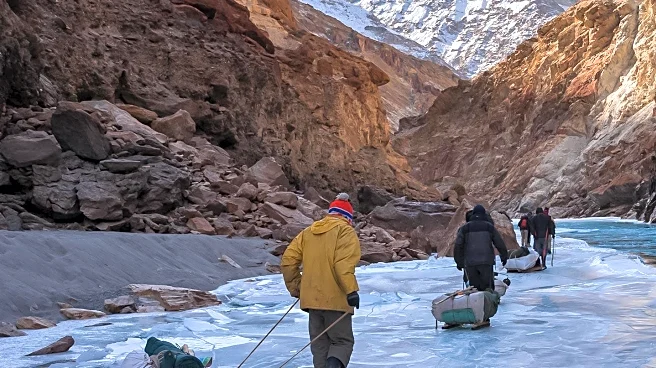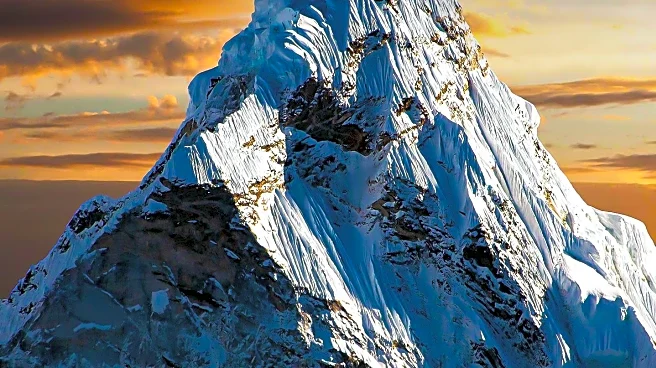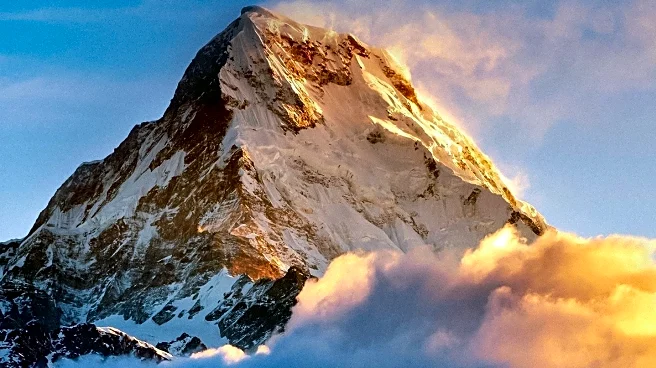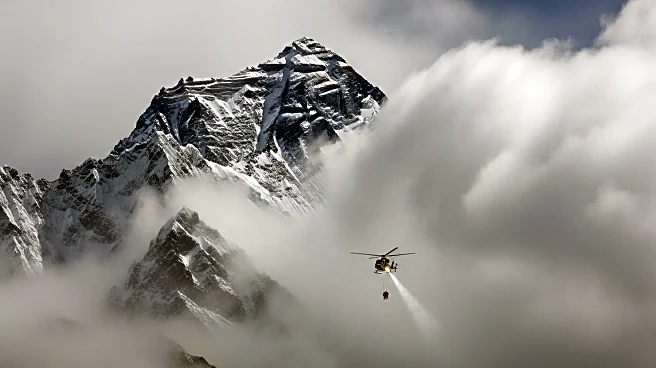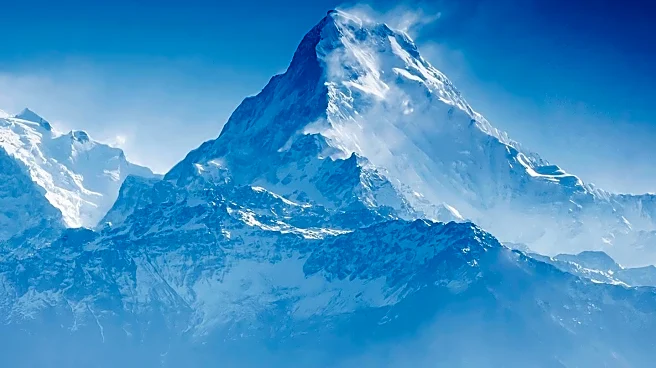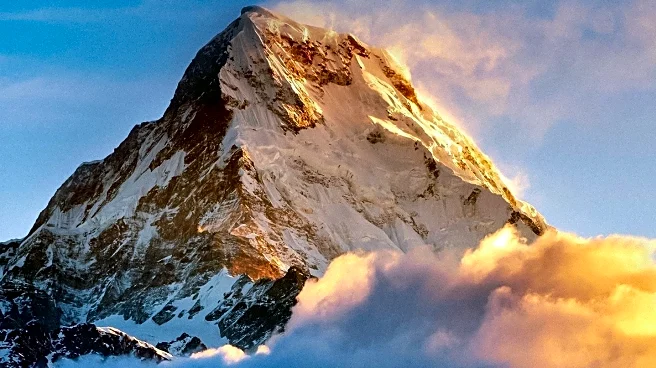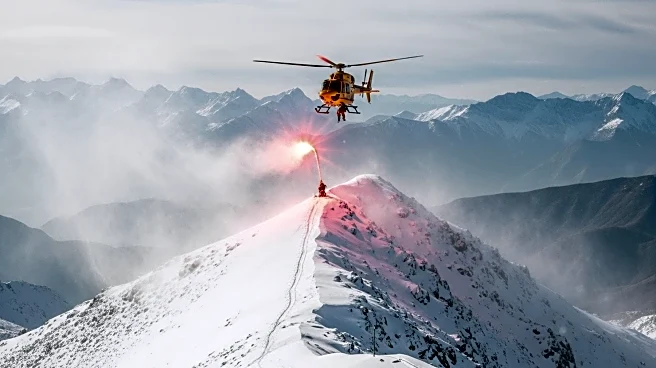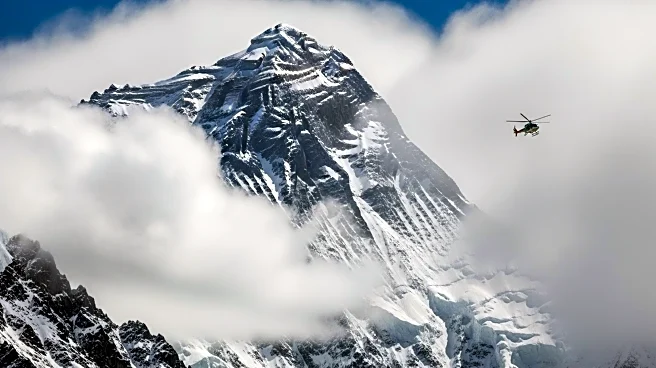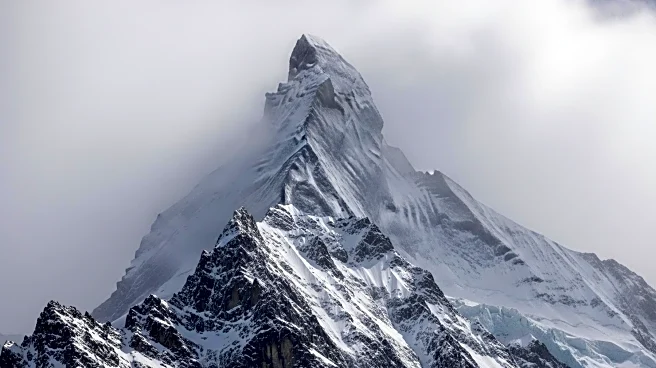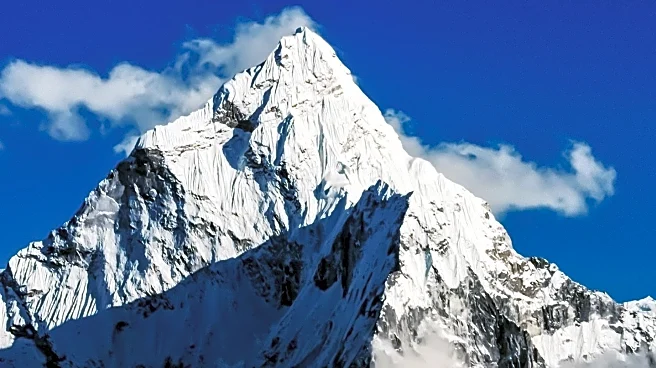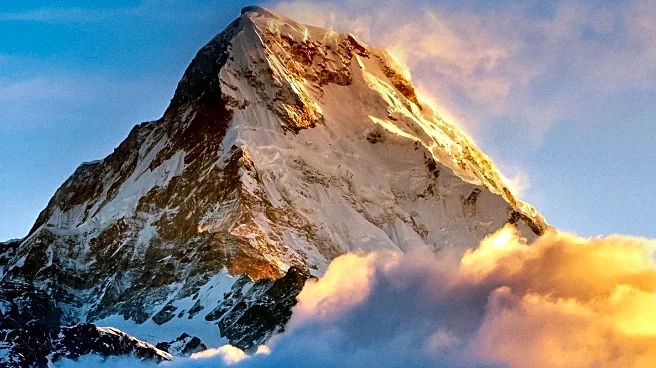What is the story about?
What's Happening?
A severe blizzard near Mount Everest stranded 580 hikers, who have now been guided to safety in Tibet. The trekkers, along with 300 local guides and support staff, were caught off guard by heavy snowfall that began on Friday evening and intensified over the weekend. The hikers were trapped at an altitude of over 4,900 meters, blocking their route up Everest's eastern slopes. The rescue operation coincided with China's Golden Week holiday, a peak season for local tourism. The hikers were guided to the township of Qudang, where emergency supplies were available. The blizzard disrupted the usual clear skies and friendly temperatures of October, a favored month for hiking in the Everest area.
Why It's Important?
The rescue operation highlights the unpredictable nature of mountain weather and the risks associated with high-altitude trekking. The incident underscores the importance of preparedness and the need for robust emergency response systems in popular trekking regions. The blizzard's timing during a peak tourist season could impact local tourism and economic activities, as safety concerns may deter future visitors. The event also raises awareness about the potential dangers of climate change, which can lead to more frequent and severe weather events, affecting both local communities and international tourists.
What's Next?
Authorities may review safety protocols and emergency preparedness measures for trekking in the Everest region. This could involve better weather forecasting, improved communication systems, and enhanced training for guides and support staff. The incident may prompt discussions on sustainable tourism practices and the need to balance economic benefits with safety and environmental considerations. Local businesses and tourism operators might also explore strategies to reassure tourists and mitigate the impact of such events on the region's economy.
Beyond the Headlines
The blizzard's impact on the Everest region could lead to broader discussions on climate change and its effects on high-altitude environments. The incident may encourage research into the long-term implications of changing weather patterns on mountain ecosystems and the communities that depend on them. Additionally, the event could spark interest in developing innovative solutions to enhance safety and resilience in remote and challenging environments.
AI Generated Content
Do you find this article useful?
